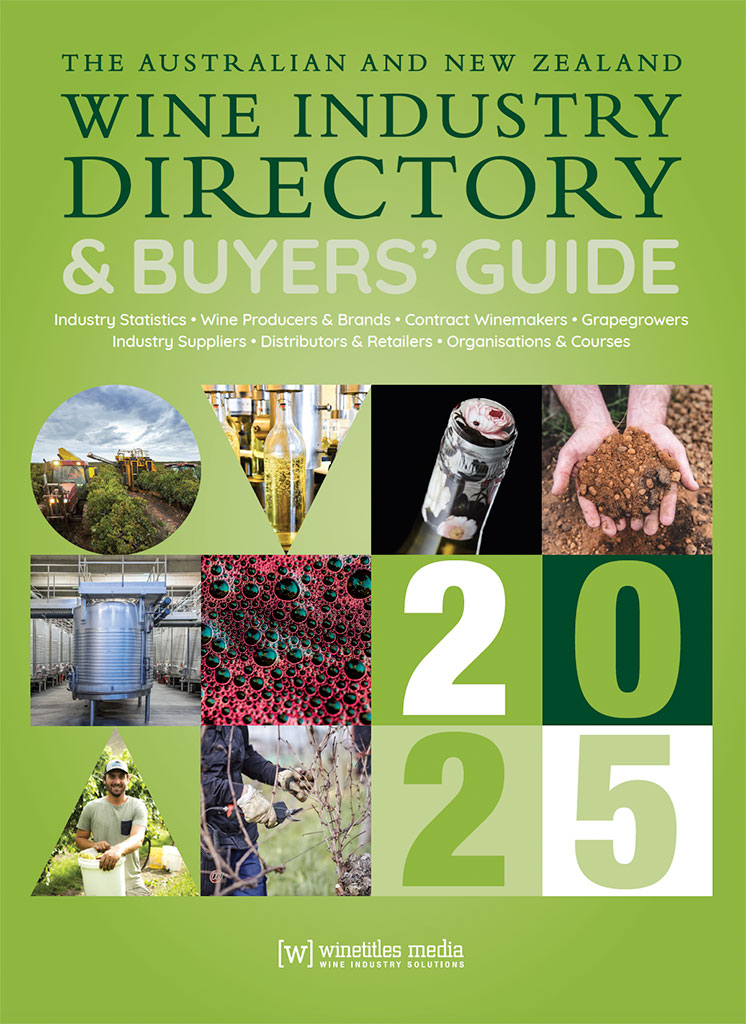1999
The 1999 vintage proved challenging due to the vagaries of weather but the Australian wine industry weathered the storm with good vineyard management and well-timed harvests and surpassed the one million tonne mark for the first time. The Winemakers’ Federation of Australia estimates a total intake for 1999 of 1,177,610 tonnes of grapes. The intake exceeds the 1998 crush of 975,674 tonnes by more than 20% and has more than doubled since 1991.
The record intake resulted from additional production from new vineyard plantings, higher yields in some regions and good management practices. Most regions have reported good to excellent quality although this varies greatly across regions and varieties. Reports indicate that high quality fruit was brought in over most of the season with disease problems affecting minor volumes that were cropped late.
According to Nick Bulleid, who prepared the national vintage report for Southcorp Wines, the early 1998-99 growing season in most regions of Australia was marked by very dry conditions. ‘This was in spite of a breakdown in the previous El Niño cycle, which had brought drought the previous year. With the exception of Western Australia and the more northerly parts of New South Wales, winter and spring were drier than normal and many dam water levels remained low,’ Mr Bulleid said. ‘Occasional frosts brought sporadic damage to some regions and a very widespread frost on 27 October badly affected vineyards through the inland parts of New South Wales, including Cowra, Canberra and Tumbarumba, in Rutherglen, central and southern Victoria and through the Riverland of South Australia to Coonawarra. Large tracts of vineyard were not badly affected, so the impact on the overall Australian crush was not large, but growth on many small vineyards was completely destroyed, particularly in the higher, cooler areas.’
‘Hot weather in December and January made big demands on remaining water supplies and caused vine stress in some regions, with loss of quality. From early February, patchy, but often quite heavy, rain began to affect most of south-eastern Australia and heavy rainfall in March caused considerable damage to central South Australia, parts of the Yarra Valley and Tasmania,’ Nick Bulleid said.
Yields varied widely across the country. The national average yield of red grapes rose from 10.4 tonnes/hectare in 1998 to 11.9 tonnes/hectare in 1999 based on the Australian Bureau of Statistics (ABS) estimate of 39,825 hectares bearing red varieties. The national average yield of white grapes rose from 13.8 tonnes/hectare in 1998 to 15.5 tonnes/hectare in 1999 based on the estimate of 31,965 hectares bearing white varieties (excluding multi-purpose varieties).
Specialist red and white grapes contributed 82% of the vintage, while multi-purpose grapes contributed 17.7% in comparison to 19.6% in 1998 and 29% in 1994.
The total specialist white winegrape intake increased by 21% representing 42% of the total crush. Chardonnay was the most widely harvested winegrape and accounted for 20% of the total harvest and posted an increase of nearly 38% from 1998. Semillon was up by 35.1% to 89,437 tonnes while Sauvignon Blanc achieved 15% growth to 23,327 tonnes. Riesling declined from 35,201 tonnes to 30,875 tonnes largely due to a decrease in area under vine.
New plantings of alternative white varieties are starting to bear with Verdelho up by 90% to 9,361 and Marsanne up by 26.9% to 2,315 tonnes.
The total red winegrape intake increased by 33% and now represents 40% of the total crush. Shiraz exceeded 200,000 tonnes for the first time with an increase of 59,244 tonnes taking it to 207,103 tonnes, 17.6% of the crush, and the Cabernet Sauvignon intake increased by over 35,000 tonnes up to 133,363 tonnes or 11.3% of the total crush. Merlot recorded the highest increase of all major varieties and was up by 127% to 33,344 tonnes. In 1998 Merlot was the 12th largest of the specialist varieties; in 1999, it became the sixth largest. Pinot Noir bucked the trend, recording a decline of 8.7% to 1,725 tonnes resulting from the rain or frosts. Other red varietals to show strong growth include Grenache (+11.4% to 24,676 tonnes) and Mataro (+12% to 9,106 tonnes).
| 1999 | ||||
|---|---|---|---|---|
| tonnes | ||||
| Cabernet Franc |
4,000
|
4,821
|
4,821
|
|
| Cabernet Sauvignon |
67,200
|
97,939
|
133,363
|
|
| Grenache | n/a |
22,151
|
24,676
|
|
| Malbec |
2,600
|
3,491
|
2,502
|
|
| Merlot |
8,600
|
14,717
|
33,344
|
|
| Pinot Noir |
14,600
|
19,936
|
18,211
|
|
| Ruby Cabernet |
12,600
|
15,282
|
20,663
|
|
| Mataro | n/a |
8,130
|
9,106
|
|
| Shiraz |
100,900
|
147,859
|
207,103
|
|
| Other red |
22,278
|
20,206
|
||
| Total red grapes |
356,604
|
473,995
|
||
| Chardonnay |
133,100
|
171,353
|
235,945
|
|
| Chenin Blanc |
14,600
|
18,046
|
16,792
|
|
| Colombard |
33,000
|
34,753
|
40,592
|
|
| Crouchen |
2,365
|
1,414
|
||
| Doradillo |
10,211
|
5,075
|
||
| Marsanne |
1,824
|
2.315
|
||
| Muscadelle |
2,500
|
2,563
|
1,923
|
|
| Muscat Blanc |
4,051
|
3,472
|
||
| Palomino/Pedro Ximines |
6,748
|
4,609
|
||
| Riesling |
33,500
|
35,201
|
30,875
|
|
| Sauvignon Blanc |
13,300
|
120,317
|
23,327
|
|
| Semillon |
51,200
|
66,223
|
89,437
|
|
| Traminer |
5,700
|
6,542
|
6,004
|
|
| Trebbiano |
12,303
|
11,282
|
||
| Verdelho |
3,000
|
4,938
|
9,361
|
|
| Other white |
10,967
|
12,239
|
||
| Subtotal specialist white |
289,900
|
408,406
|
494,662
|
|
| Sultana |
115,300
|
137,016
|
138,985
|
|
| Muscat Gordo Blanco |
79,900
|
73,646
|
69,968
|
|
| Subtotal multipurpose |
210,664
|
208,953
|
||
| Total white grapes |
619,070
|
703,615
|
||
| Total grapes |
798,000
|
975,674
|
1,177,610
|
















